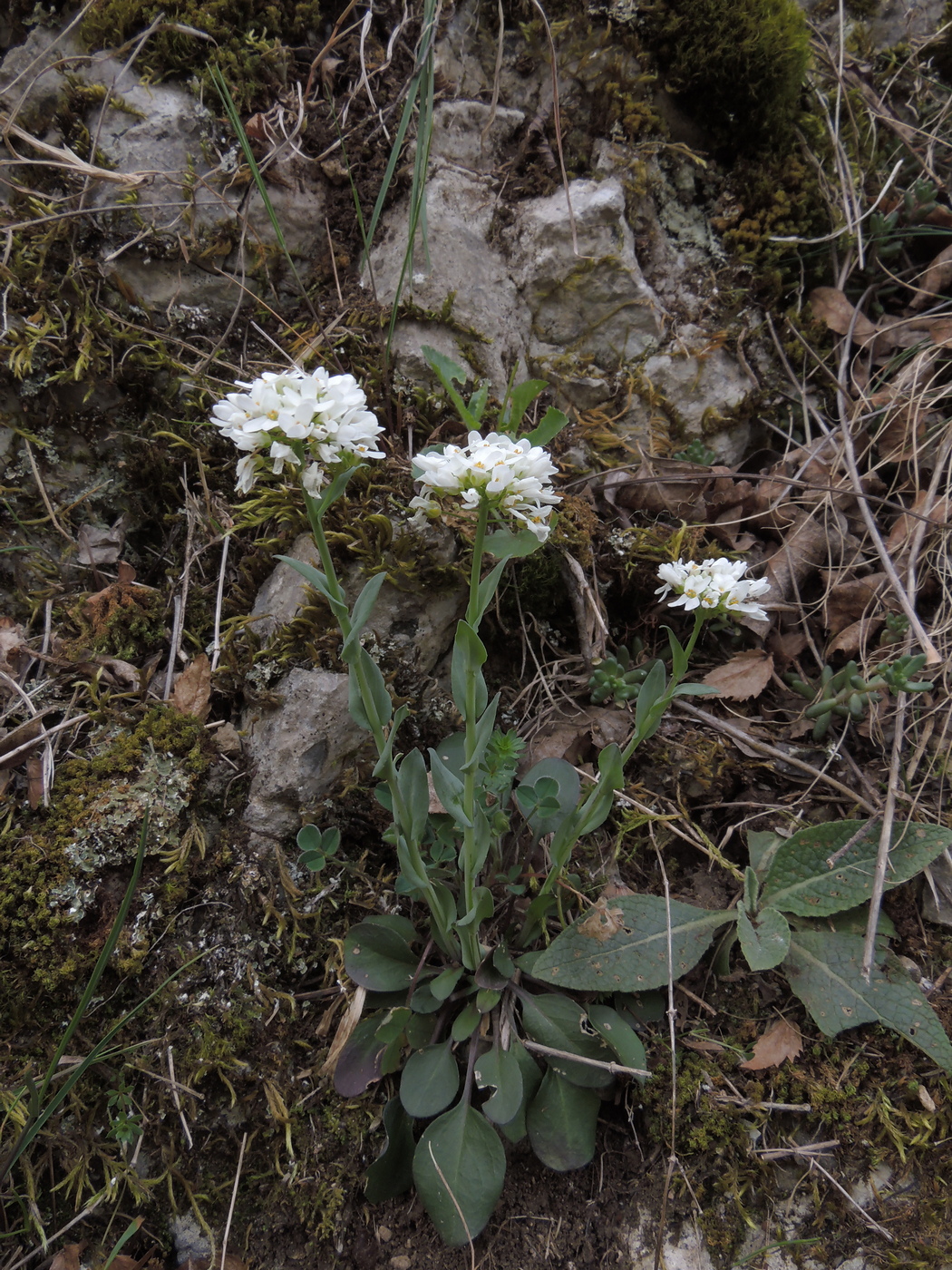Noccaea aptera
(Noccaea aptera)

Description
Noccaea aptera is a plant species that belongs to the Brassicaceae family, commonly known as the mustard family. It is a small, herbaceous plant that is native to Europe, particularly in the Alpine regions. In this article, we will discuss the characteristics, habitat, distribution, and other important aspects of this plant species. Taxonomy Noccaea aptera was first described by the German botanist Franz Fukarek in 1883. It was previously known as Thlaspi apterum, but recent molecular studies have shown that it is more closely related to other Noccaea species than to Thlaspi. The genus Noccaea was established in 2007 and comprises about 20 species that were previously classified under the genus Thlaspi. Description Noccaea aptera is a small, herbaceous plant that grows up to 20 cm in height. It has a basal rosette of leaves that are oblong to spatulate in shape, with entire or toothed margins. The leaves are usually 2-6 cm long and 0.5-1.5 cm wide. The stem is usually leafless or has a few leaves, and it is covered with fine hairs. The flowers of Noccaea aptera are small and white, and they are arranged in dense clusters at the top of the stem. The flower has four petals and four sepals, and it is about 3-4 mm in diameter. The fruit is a small, flat, oval-shaped silicle, about 4-6 mm long and 2-4 mm wide. The silicle contains 1-3 seeds and is dehiscent, meaning that it splits open when ripe. Habitat and Distribution Noccaea aptera is a plant species that is adapted to harsh environments, particularly in the Alpine regions of Europe. It is often found growing in rocky or gravelly soils, and it can tolerate extreme temperatures and high altitudes. It is also known to grow in disturbed areas, such as roadsides and mine sites. Noccaea aptera is distributed mainly in the Alpine regions of Europe, including Austria, Italy, Switzerland, France, and Germany. It is also found in the Carpathian Mountains of Romania and Slovakia. In recent years, it has been introduced to North America and Australia as an ornamental plant. Ecology Noccaea aptera is an important plant species in the Alpine ecosystem, as it is adapted to the harsh environmental conditions in this region. It is able to survive in soils that are poor in nutrients and water, and it has been shown to play an important role in the nutrient cycling of these ecosystems. Noccaea aptera is also known to accumulate heavy metals, such as cadmium, lead, and zinc, in its tissues. This ability to tolerate and accumulate heavy metals has led to its use in phytoremediation, a process of using plants to remove pollutants from contaminated soils. Conservation Status Noccaea aptera is not considered a threatened species, as it has a wide distribution range and is relatively abundant in its natural habitats. However, it is important to note that its habitat is vulnerable to anthropogenic disturbances, such as mining, tourism, and land-use changes. Therefore, it is important to monitor the populations of Noccaea aptera and its associated habitats to ensure their long-term conservation. Conclusion Noccaea aptera is a small, herbaceous plant that is adapted to harsh environmental conditions in the Alpine regions of Europe. It is an important species in the Alpine ecosystem, as it is able to survive in soils that are poor in nutrients and water, and it plays an important role in nutrient cycling. The ability of Noccaea aptera to tolerate and accumulate heavy metals has also led to its use in phytoremediation. Although Noccaea aptera is not currently considered a threatened species, its habitat is vulnerable to anthropogenic disturbances. Therefore, it is important to monitor the populations of Noccaea aptera and its associated habitats to ensure their long-term conservation. Additionally, further research on the ecological and genetic characteristics of Noccaea aptera is necessary to better understand its role in Alpine ecosystems and its potential for phytoremediation. Overall, Noccaea aptera is an important plant species with unique adaptations that allow it to survive in harsh environments. Its ability to tolerate and accumulate heavy metals makes it a potential tool for phytoremediation, highlighting the importance of preserving and studying this species.
Taxonomic tree:







